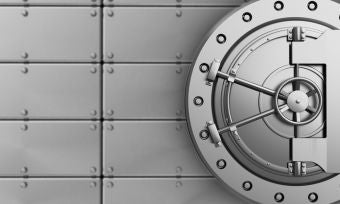It might seem like a big ask but saving $5000 over three months is not impossible. There are a number of simple things you can do to reach that goal and we have come up with 13 ideas for you.
Some mean cutting costs, some are about getting creative with your spending and some involve bringing in extra money. Some have the potential to generate significant savings while others will add smaller amounts to your bank account.
The potential savings from our suggestions actually come to $4994 but keep in mind the savings are based on hypothetical examples. You might not be able to act on all of them or the amount you can save may be different but hopefully, it serves as inspiration.
1. Use AI in the kitchen
Have you ever looked in the pantry or fridge and thought to yourself that there aren’t enough ingredients for a decent meal so you may as well order takeaway? I know I have been guilty of this. Well, the arrival of AI means you can’t use this as an excuse anymore. There are plenty of recipe generators that use artificial intelligence to come up with recipes based on the ingredients you have at home.
So, every time you think you have nothing to cook, turn to AI before you turn to Uber Eats or Menulog. Even if this saves you just one takeaway meal a month at $50 a pop, you’ll have an extra $150 in your bank account at the end of three months.
Using AI this way can also help you reduce food waste. Households throw away approximately $1520 worth of food on average, every year, according to a 2023 study by Rabobank. That works out to just under $130 a month! If you managed to reduce that by half using AI then you can potentially add a further $190 to your savings in three months.
Potential savings: $340
→Related article: ChatGPT: Everything You Need to Know
2. Sell unwanted items around the house
They say one man’s trash is another man’s treasure, so why not try to make extra cash by selling things that you no longer use or want? Someone might be willing to pay you big bucks for that treadmill you’ve been using as a clothes hanger.
A 2021 report by Trademe found that, on average, New Zealanders have around 26 unwanted or unused items lying around their home. It estimates Kiwis could make as much as $1700 from selling these items.
Potential earnings: $1700
3. Download a fuel price app
Petrol prices have been through the roof. The national average sat at $2.87 per litre for the 28 days ending 26/10/23, according to fuel price app Gaspy.
Apps such as Gaspy and Fuelio can help you save money at the bowser by directing you to the cheapest petrol in your area. A difference of 20c per litre between the cheapest and most expensive gas is not uncommon.
Let’s say you fill up your 55-litre tank once a week and save, on average, 10c a litre, then you could potentially save $66 over three months.
Potential savings: $66
→Related article: Fuel Apps and Websites That can Help You Save on Petrol
4. Ditch a streaming service
Kiwis were spending, on average, $37.50 per month on streaming services, according to Scoop research in 2019. As streaming services cost between $8-$45, the findings suggest that many people are signed up to multiple streaming platforms.
How many streaming services are you currently paying for? If you have a few subscriptions going, cancelling one of them could give your savings a boost and you’ll still have something to watch. Most streaming services start at $12.99 a month (with Amazon Prime coming in slightly lower at $8) so you could save yourself $38.97 over three months. Every little bit counts.
Potential savings: $38.97
→Related article: Netflix and Bill: Comparing the Costs of Streaming Services in New Zealand
5. Pick up a few one-off side hustle gigs
One way to put more money in the coffers is to earn more, but it doesn’t have to mean taking on a permanent second job. Sites such as Neighbourly and Sidekicker have made it easier to make extra cash by picking up jobs here and there. You could get paid to wash cars, assemble furniture, do some basic gardening or even line up in queues!
If you worked a couple of two-hour side hustles for $30 an hour, you could earn around $120 per week, or $1440 in three months (before tax)!
Potential earnings: $1440
6. Try generic and discounted brands at the supermarket
Most of us are creatures of habit and tend to stick to the same brands of groceries, but it can be worth trying generic brands to cut costs. In some cases – particularly with staples such as flour, sugar, rice, tinned tomatoes – you won’t even be able to tell the difference.
Each week financial research website Interest.co.nz has been doing a price comparison of the same 46 healthy grocery items using prices from the Countdown New Zealand website. At the time of writing (26/10/2023) the total cost came to $212.77.
Canstar crunched the numbers and found that the average household could potentially save $24.90 per week by simply opting for discounted or generic brand groceries. Over three months that comes to $298.80.
Bear in mind that you could save even more by shopping around to find which supermarkets have the cheapest options. While this will take some extra time, the potential savings are worthwhile.
Potential savings: $298.80
7. Score yourself freebies
From free coffee to $10 vouchers there are plenty of freebies out there up for grabs – but, of course, they tend to come with a catch. Usually, it’s something like joining a loyalty program, downloading an app or registering to receive emails.
These offers are essentially like getting an instant discount. Needless to say, when it comes to vouchers, it’s important to make sure you’re still getting the best price.
Here’s how the savings could tally up over the course of three months assuming you take advantage of two offers each month.
In the first month, let’s say you’re in the market for new bed linen or towels. You could score a $10 voucher to use at Briscoes by subscribing to the retailer’s newsletter. It can only be used on purchases over $50 but chances are you’d spend that much anyway.
You wouldn’t mind getting a bite to eat while you’re at the shops. How does a dessert from Lone Star sound? Join the Lone Star loyalty program and you’ll get a ‘free dessert reward’ coupon. Plus, if it’s your birthday you’ll receive a $20 voucher! Or, sign up to Doe Donut’s mailing list and you’ll get up to 10% off your first order.
In the second month, you have to buy a gift for a friend’s birthday. Find something you think they’d like at Bed, Bath & Beyond, sign up to their rewards program and enjoy 30% off full priced items year round.
Now on to the third month and you need a new pair of shoes. Become a member of Novo Rewards and you can get $10 off your first purchase as long as $90 or more.
Finally, you can treat yourself to a two-for-one coffee at Columbus Coffee by joining Columbus Rewards online.
Potential savings: $83
8. Get cashback when you shop
How do you like the sound of getting cash back when you shop? There are a number of apps and websites that let you do just that and they can be another way to nudge up your savings. Kiwiwallet and ShopRewards are two of the most popular options.
Exactly how much cash you get back varies from retailer to retailer and there are often short-term promotions where the cashback amounts are boosted but the amounts can range anywhere from around 1% to 40% or more for the special promos.
Assuming you spend $200 a month at stores offering cashback and you get 5% cashback on average, then at the end of three months that will generate savings of $30. Keep in mind, though, that cashback isn’t paid immediately and there is often a minimum payout amount. Kiwiwallet, for example, will only pay out your cashback when you meet the $15 threshold.
Potential earnings: $30
9. Use your reward points to shop
Given that 97% of New Zealanders are members of at least one loyalty program, chances are you have collected points somewhere that you can use towards a purchase. Or maybe you’ve earned enough points on your rewards credit card to buy a $50 voucher.
Take a look at your membership to see just how much the points you have built up can get you.
Potential savings: $50
10. Join a library
If you love a good book then consider borrowing your local library rather than popping out to the shops to buy them. You might have to be a little patient though to get your hands on newer releases as they can be quite popular. Just be sure to ask if you can be put on the waiting list if the book you want is on loan.
If you normally buy one book a month at $25 a pop then at the end of three months you’ll have saved yourself $75.
Potential savings: $75
11. Get paid for your opinion
What if I told you that there are organisations that are willing to pay for your opinion and, in some cases, you don’t even have to leave the house to share your thoughts? Ipsos iSay, Nielsen and Opinion World are some of the companies offering online paid research opportunities.
You can expect to be paid $15 to $50 for online sessions, in either cash or gift cards. If you take on one job a month paying $50 then that’s an extra $150 towards your savings.
Potential savings: $150
12. Ditch your gym membership
Being fit and healthy is important but it is possible to do it without paying for an expensive gym membership. There are free apps you can use to work out from home and you often don’t even need any equipment.
Given that Kiwis spend between $34 and $285 per month on gym memberships, ditching your membership could potentially save you up to $243 in three months. If you really miss the gym you can always join again when you hit your savings target.
Potential savings: $729
→Related article: Work it Out: A Guide to Free Fitness Apps
13. Opt for generic medication
If you take prescription medication then consider buying the generic option when you’re at the pharmacy. Often you’ll be presented with the option when you’re getting your prescription filled but, if not, you can always ask if there is a generic version available. There are also generic alternatives to popular pain relief medications such as Panadol and Nurofen.
And, in case you were worried, generic medicines are as effective and safe as brand-name medicines according to Pharmac: “Generic medicines must have the same active ingredients as the original medicine. As such, they have the same risks and benefits as the original brand medicines.”
Let’s take a look at how much you could potentially save over three months using Nurofen and Crestor (a drug used to treat high cholesterol) as examples.
At the time of writing, a 48-pack of Nurofen from Chemist Warehouse would cost you $14.99, but you could pick up a 100 pack of generic ibuprofen for $3.99 – $11 less.
You’d pay $49.99 for 30 Crestor tablets (10mg), but the generic option would cost you $44 less, which adds up to $132 over three months.
Potential savings: $143
Best savings accounts
If you’re currently considering a savings account, the table below displays some of the regular saver accounts on our database (some may have links to lenders’ websites).
This table is sorted by total interest (including bonus) (highest to lowest), followed by company name (alphabetical). Products shown are for savings of $10,000. Before committing to a particular savings account product, check upfront with your financial institution and read the applicable documentation to confirm whether the terms of the account meet your needs. Use Canstar’s savings account selector to view a wider range of savings account products. Canstar may earn a fee for referrals.
Compare savings accounts for free with Canstar!
About the reviewer of this page
This report was reviewed by Canstar Content Producer, Caitlin Bingham. Caitlin is an experienced writer whose passion for creativity led her to study communication and journalism. She began her career freelancing as a content writer, before joining the Canstar team.
Enjoy reading this article?
You can like us on Facebook and get social, or sign up to receive more news like this straight to your inbox.
By subscribing you agree to the Canstar Privacy Policy





Share this article